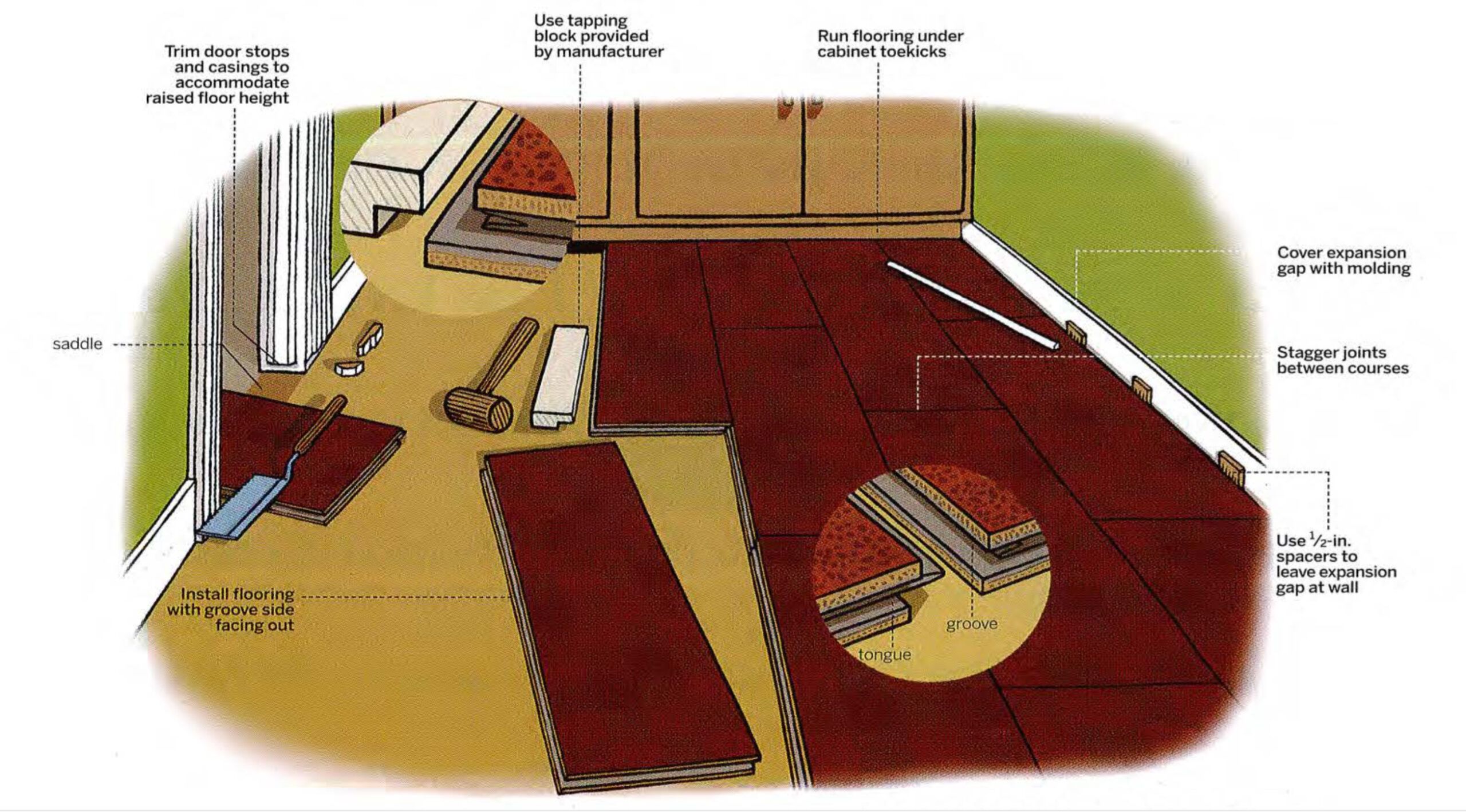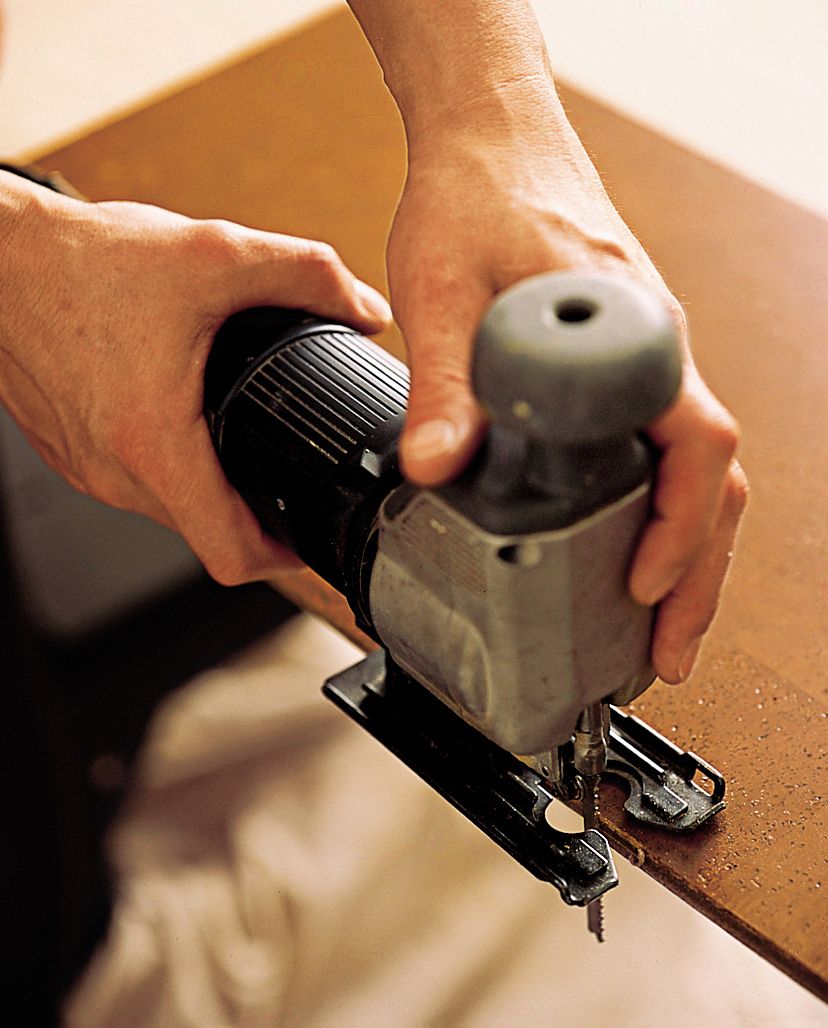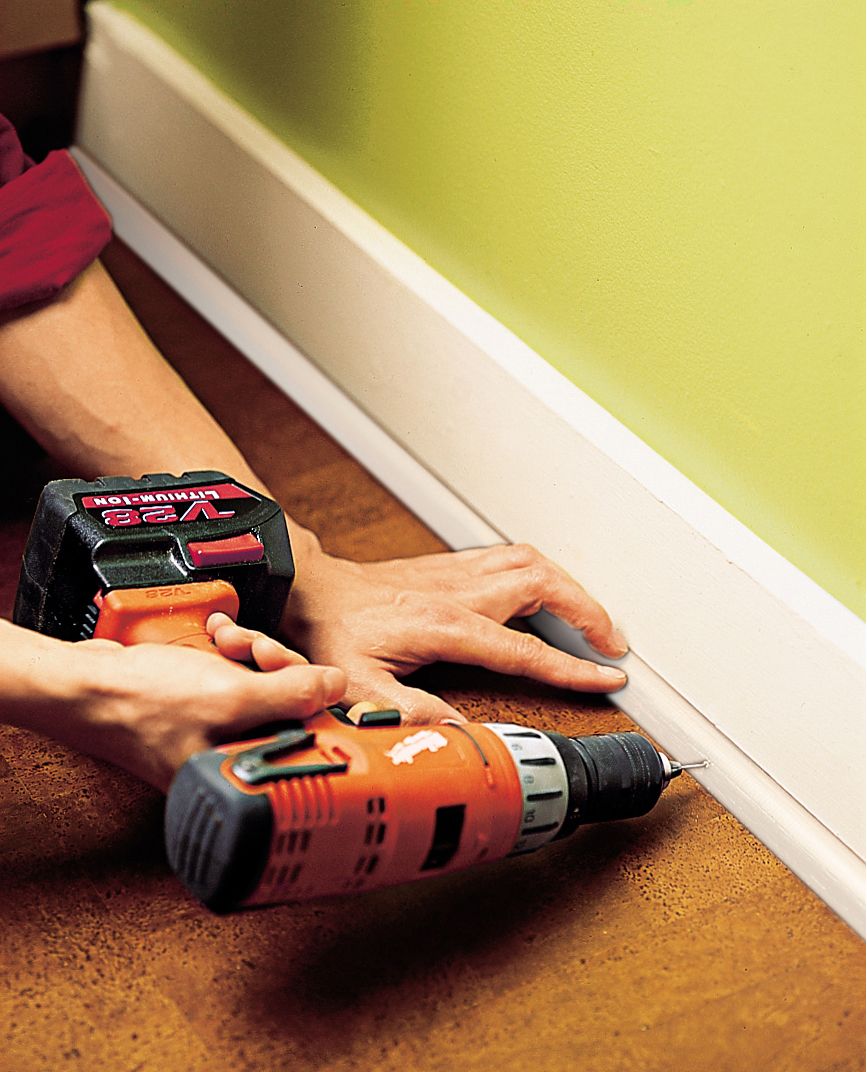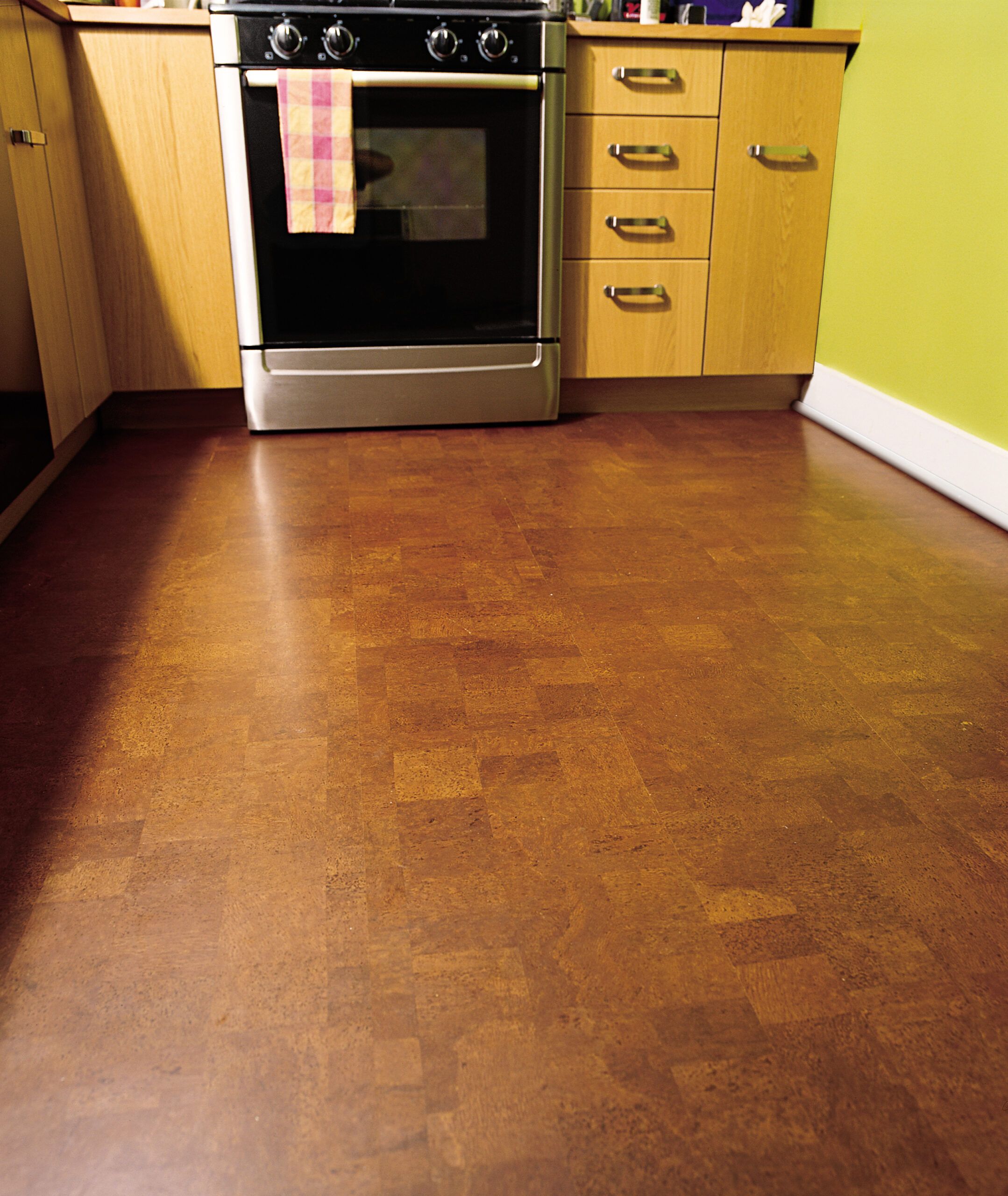Project details
Skill
Cost
Estimated Time
Cork flooring is eco-friendly and comfortable, providing a softer surface underfoot than harder flooring materials. It’s also durable and has excellent insulation against sound and temperature fluctuations, making it a well-balanced choice for your home. You can install cork flooring yourself with the right tools and a little know-how. This guide walks you through the process.
Preparing for Cork Floor Installation

This section covers the steps to take before you begin laying your new floor.
Tools and Materials Needed
Gather the following tools and materials:
- Cork flooring planks or tiles
- Hammer
- Jigsaw or handsaw
- Measuring tape
- Pencil
- Pull bar
- Safety glasses and knee pads
- Spacers (1/2 inch)
- Tapping block
- Underlayment (if required)
- Utility knife
 Straight edge
Straight edge Clamps
Clamps Jigsaw
Jigsaw Flush cut saw
Flush cut saw Mallet
Mallet Flat pry bar
Flat pry bar Miter box
Miter box Drill/driver
Drill/driver
Measuring Your Space
Accurate measurements determine how much flooring to buy and how to plan your layout. Measure the length and width of the room, then multiply these numbers to calculate the square footage. Add 10% to account for waste and cuts. Don’t forget to measure doorways and any alcoves or closets that will be floored.
Acclimating Cork Flooring
Cork flooring needs time to adjust to your home’s temperature and humidity before installation. Unpack the flooring and let it sit in the room where it will be installed for at least 72 hours. This acclimation period helps prevent gaps or buckling after installation.
Pre-Installation Steps

Before laying your cork floor, you need to prepare the room and existing flooring as follows:
- Removing existing flooring: If you’re replacing old flooring, remove it completely, including any staples or adhesive residue. For a clean slate, you may need to remove baseboards as well. If you’re installing over concrete, make sure the surface is clean, dry, and level.
- Preparing the subfloor: The subfloor must be clean, dry, and level before installing cork flooring. Fill any cracks or holes with an appropriate filler and sand down any high spots. For installations over concrete, apply a moisture barrier to prevent potential water damage to your new floor.
- Trimming door casings and jambs: To achieve a professional look, trim door casings and jambs to allow the cork flooring to slide underneath. Place a piece of cork flooring next to the casing as a guide, and use a flush-cut saw to trim the casing to the correct height.
Installing Cork Flooring

Here’s how to install the cork flooring:
- Layout planning: Start by determining the direction you want the planks to run. Generally, planks look best when installed parallel to the longest wall or in the same direction as the main light source. Measure the width of the room and divide by the width of a plank to determine if you need to cut the first row lengthwise for a balanced look.
- Installing the first row: Begin in a corner of the room, placing 1/2-inch spacers against the walls to allow for expansion. Trim the tongue off the first row of planks facing the wall if necessary. Lay the first plank and continue along the wall, clicking planks together at the short ends. Use a tapping block to create tight seams.
- Continuing the installation: For subsequent rows, start with the leftover piece from the previous row if it’s at least 10 inches long. This approach creates a staggered pattern that adds strength and visual appeal. Insert the long side of each plank at an angle into the previous row, then lower it to click into place. Use the tapping block to secure the long seams.
- Fitting the last row: Measure the gap for the last row and cut planks to fit, remembering to leave a 1/2-inch expansion gap. You may need to use a pull bar to click these final pieces into place. If the last row is less than 2 inches wide, cut both the first and last rows for a more balanced look.

Finishing Touches
After installing the main flooring, these final steps will complete your cork floor installation:
- Installing trim and molding: Remove the spacers and install baseboards or quarter-round molding to cover the expansion gaps around the room’s perimeter. If you removed existing baseboards, you can now reinstall them. Nail the trim to the wall, not the floor, to allow for natural movement of the cork.
- Applying a protective finish (if necessary): While many cork floors come pre-finished, some manufacturers recommend using an additional protective coat after installation. If required, follow the manufacturer’s instructions for applying a polyurethane or other recommended finish to increase durability and water resistance.

Maintaining Your New Cork Floor
Proper care will keep your cork floor looking beautiful for years to come. Here are some tips for daily care and long-term maintenance.
Daily Care Tips
Here are some daily care practices:
- Clean spills immediately to prevent staining.
- Place felt pads under furniture legs to prevent scratches and dents.
- Sweep or vacuum regularly to remove dirt and debris.
- Use a damp mop with a mild cleaner suitable for cork floors.
Long-Term Maintenance Strategies
Keep in mind the following long-term care tips:
- Avoid walking on the floor with high heels or cleats.
- Maintain consistent indoor humidity levels to prevent expansion and contraction.
- Reapply a protective finish every few years or as recommended by the manufacturer.
- Use area rugs in high-traffic zones to reduce wear.
Regular Inspections
Below is what you should do for routine inspections:
- Address minor repairs immediately to prevent larger issues.
- Check for signs of wear and damage.
- Follow manufacturer guidelines for specific maintenance tasks.
Troubleshooting Common Cork Flooring Issues
Even with proper installation and care, you may encounter some issues with your cork floor. Here’s how to address common problems:
- Gaps between planks: Gaps can occur due to improper installation or changes in humidity. For small gaps, try using a floor gap fixer tool. Larger gaps may require professional attention or plank replacement.
- Moisture problems: If you notice swelling or cupping in your cork floor, it may be due to excess moisture. Identify and eliminate the source of moisture, then use a dehumidifier to dry out the area. In severe cases, you may need to replace affected planks.
- Scratches and dents: If minor scratches or dents occur, you can often remedy them with a touch-up kit designed for cork flooring. For deeper scratches, sanding and refinishing the affected area might be necessary.









